7-Zip is a free and open-source file archiver, a utility used to place groups of files within compressed containers known as "archives". 7-Zip uses its own 7z archive format, but can read and write several other archive formats. The program can be used from a command-line interface as the command p7zip, or through a graphical user interface that also features shell integration. Most of the 7-Zip source code is under the GNU LGPL license; the unRAR code, however, is under the GNU LGPL with an "unRAR restriction", which states that developers are not permitted to use the code to reverse-engineer the RAR compression algorithm.
7-Zip is free software with open source. The most of the code is under the GNU LGPL license. Some parts of the code are under the BSD 3-clause License. Also there is unRAR license restriction for some parts of the code. Read 7-Zip License information.
You can use 7-Zip on any computer, including a computer in a commercial organization. You don't need to register or pay for 7-Zip.
The main features of 7-Zip:
- High compression ratio in 7z format with LZMA and LZMA2 compression
- Supported formats:
- Packing / unpacking: 7z, XZ, BZIP2, GZIP, TAR, ZIP and WIM
- Unpacking only: AR, ARJ, CAB, CHM, CPIO, CramFS, DMG, EXT, FAT, GPT, HFS, IHEX, ISO, LZH, LZMA, MBR, MSI, NSIS, NTFS, QCOW2, RAR, RPM, SquashFS, UDF, UEFI, VDI, VHD, VMDK, WIM, XAR and Z.
- For ZIP and GZIP formats, 7-Zip provides a compression ratio that is 2-10 % better than the ratio provided by PKZip and WinZip
- Strong AES-256 encryption in 7z and ZIP formats
- Self-extracting capability for 7z format
- Integration with Windows Shell
- Powerful File Manager
- Powerful command line version
- Plugin for FAR Manager
- Localizations for 87 languages
7-Zip works in Windows 10 / 8 / 7 / Vista / XP / 2019 / 2016 / 2012 / 2008 / 2003 / 2000.
p7zip - the port of the command line version of 7-Zip to Linux/Posix.
On 7-Zip's SourceForge Page you can find a forum, bug reports, and feature request systems.
7-Zip comes with a file manager along with the standard archiver tools. The file manager has a toolbar with options to create an archive, extract an archive, test an archive to detect errors, copy, move, and delete files, and open a file properties menu exclusive to 7-Zip. The file manager, by default, displays hidden files because it does not follow Windows Explorer's policies. The tabs show name, modification time, original and compressed sizes, attributes, and comments (4DOS descript.ion format).
When going up one directory on the root, all drives, removable or internal appear. Going up again shows a list with four options:
- Computer: loads the drives list
- Documents: loads user's documents, usually at
%UserProfile%My Documents - Network: loads a list of all network clients connected
- \.: Same as "Computer" except loads the drives in low-level NTFS access. This results in critical drive files and deleted files still existing on the drive to appear. (NOTE: As of November 2020, access to the active partition in low-level mode is not allowed for currently unknown reasons.)


 Snipping Tool Win 10
2,114
Snipping Tool Win 10
2,114
 Sandboxie 5.45.0
2,064
Sandboxie 5.45.0
2,064
 Acrobat Pro 11
1,887
Acrobat Pro 11
1,887
 Adobe Flash Player 32.0.0.465
2,845
Adobe Flash Player 32.0.0.465
2,845
 Malwarebytes Anti Malware 4.3.0.206
1,884
Malwarebytes Anti Malware 4.3.0.206
1,884
 WinRAR download for PC win 32 bit, 64 bit
3,141
WinRAR download for PC win 32 bit, 64 bit
3,141
 WinRAR 64bit
2,415
WinRAR 64bit
2,415
 Google Earth Pro 7.3.2.5776 EN
4,444
Google Earth Pro 7.3.2.5776 EN
4,444
 Recuva 1.53.1087 - Recuva file recovery, data recovery free download
42
Recuva 1.53.1087 - Recuva file recovery, data recovery free download
42
 Adobe Flash Player 21.0.0.242
2,616
Adobe Flash Player 21.0.0.242
2,616
 Setup from USB - Free download and software reviews
2,164
Setup from USB - Free download and software reviews
2,164
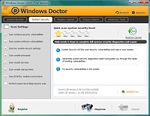 Windows Doctor - Free download and software reviews
2,127
Windows Doctor - Free download and software reviews
2,127
 Xmanager - Free download and software reviews
2,135
Xmanager - Free download and software reviews
2,135
 Sharp World Clock - Free download and software reviews
2,024
Sharp World Clock - Free download and software reviews
2,024
 Live Wallpaper Creator - Free download and software reviews
2,129
Live Wallpaper Creator - Free download and software reviews
2,129
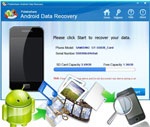 Potatoshare Android Data Recovery - Free download and software reviews
2,355
Potatoshare Android Data Recovery - Free download and software reviews
2,355
 Windows 10 Firewall Control (64-bit) - Free download and software reviews
2,300
Windows 10 Firewall Control (64-bit) - Free download and software reviews
2,300
 PC Optimizer - Free download and software reviews
2,214
PC Optimizer - Free download and software reviews
2,214
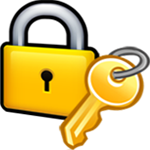 Advanced File Lock - Free download and software reviews
1,978
Advanced File Lock - Free download and software reviews
1,978
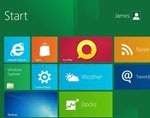 Tweak UI - Free download and software reviews
1,850
Tweak UI - Free download and software reviews
1,850
 Google Chrome Free...
166890
Google Chrome Free...
166890
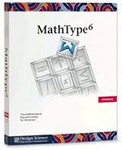 MathType 6.9a -...
79672
MathType 6.9a -...
79672
 Zalo for PC
29606
Zalo for PC
29606
 Beach Head 2002 -...
25782
Beach Head 2002 -...
25782
 iBackupBot - Free...
22639
iBackupBot - Free...
22639
 AnonymoX 2.0.2 -...
22224
AnonymoX 2.0.2 -...
22224
 Snipping Tool++...
20922
Snipping Tool++...
20922
 Age of Empires 1.0
17093
Age of Empires 1.0
17093
 Realtek AC97 Audio...
16551
Realtek AC97 Audio...
16551
 Citrio...
14590
Citrio...
14590